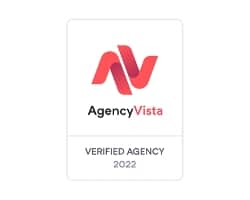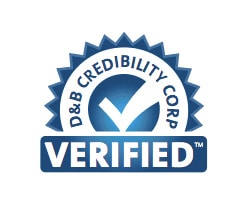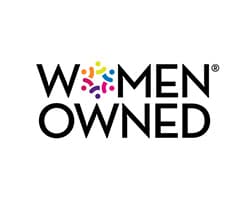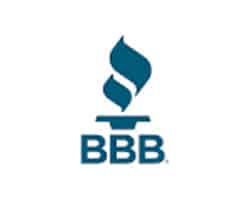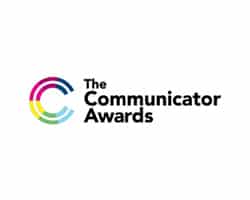In B2B marketing, it’s not enough to just present your product or service— you need to tell a story that resonates with your audience. The good news is, storytelling is a science, and when done correctly, it can be your most powerful marketing tool. Here’s a step-by-step guide to help you apply storytelling principles in your marketing strategy and connect with your audience on a deeper level.
Step 1: Understand the Power of Storytelling in Marketing
Storytelling is hardwired into human communication. The brain processes stories differently than raw data, activating the areas responsible for emotions and sensory experiences. That’s why a compelling narrative can be far more memorable—and persuasive—than a list of features and benefits.
Why It Works
- Stories make complex ideas more accessible and easier to retain.
- Emotionally engaging narratives build trust and foster connection.
- Story-driven content increases engagement and conversion rates more effectively than traditional marketing copy.
Data and features will always have their place in B2B marketing, but without a compelling story to tie them together, they risk being forgettable. Whether you’re introducing a new product, explaining a complex solution, or differentiating your brand, a well-structured narrative transforms abstract ideas into something tangible, bridging the gap between logic and emotion, and making your message resonate on a deeper level.
Learn more about the power of authentic storytelling in business communication here.
Step 2: Define Your Brand’s Story
Before you can tell your story, you need to define it. What does your brand stand for? What’s the bigger picture behind your product or service? And most importantly, what is the journey you want to take your audience on?
Key Questions to Shape Your Narrative
- What challenge does your target audience face?
- How does your product or service solve that challenge?
- What transformation do customers experience when they work with you?
Your brand story should revolve around these elements to ensure it speaks directly to your audience’s needs. If your messaging feels disjointed or lacks emotional pull, it may be time to refine your brand narrative. A clearly defined brand narrative should be woven throughout your website, content marketing, sales materials, and even internal communications. Taking the time to refine your brand story ensures that every touchpoint delivers a consistent and compelling experience.
Download our free worksheet on defining your brand story for a detailed guide on how to get started.
Step 3: Identify Your Audience’s Journey
Your story isn’t just about your brand—it’s about your customers. The most effective marketing stories align with your audience’s journey, addressing their needs and concerns at every stage. To do this, you need to understand your audience’s journey inside and out, from their initial pain points to their ultimate goals.
The Buyer’s Journey in Storytelling
- Awareness: They recognize a problem or need.
- Consideration: They start researching solutions.
- Decision: They choose a solution that fits their needs.
Storytelling that aligns with each stage of the buyer’s journey ensures that your content is relevant and timely. In the awareness phase, your story should highlight the problem. In the consideration phase, focus on how your solution fits into the bigger picture. By the decision phase, your narrative should emphasize success stories, proof points, and what differentiates you from competitors. For each stage, craft a story that speaks to where your audience is and how your solution is the right fit.
For more insights on using storytelling throughout the buyer journey, check out our Brand180 podcast episode with Jarie Bolander on how to use storytelling to create impactful B2B brand messaging.
Step 4: Structure Your Story
A compelling story has a clear structure that engages your audience from start to finish. Here’s how to break it down:
The Three-Part Formula for Effective Storytelling
- The Challenge: Introduce the problem your audience is facing. This should be something they can relate to, something that makes them think, “That’s exactly what we’re dealing with.”
- The Solution: Show how your product or service addresses this challenge. Highlight the benefits and unique features that make your solution the ideal choice.
- The Result: Conclude with the transformation your customer experiences after using your solution. Use real results—this could be testimonials, case studies, or measurable outcomes.
Crafting a strong story structure ensures your messaging remains clear, engaging, and easy to follow. Without structure, even the most compelling narratives can lose effectiveness. The challenge-solution-result format helps guide prospects through a natural progression, making it easier for them to visualize how your offering fits into their business. Whether in blog posts, case studies, or sales presentations, using a defined structure makes your messaging more digestible and persuasive.
Learn more about how storytelling influences decision-making here.
Step 5: Make It Relatable—Use Real Customer Stories
B2B buyers aren’t just looking for solutions—they’re looking for proof. That’s why customer success stories are one of the most powerful forms of storytelling in marketing.
How to Build a Strong Customer Story:
- Start with a real challenge – What problem was the customer facing before they found your solution?
- Showcase the transformation – How did your product or service make a measurable impact?
- Keep it authentic – Use real customer quotes and avoid overly polished, generic messaging.
*Pro Tip: Use a case study format to tell the story of a client that faced a challenge, turned to your solution, and achieved measurable success. This can be in written form or a video testimonial.
A compelling customer story does more than highlight a great outcome—it builds trust. Prospects want to see themselves in your existing customers, facing similar challenges and ultimately finding success with your solution. The key is to focus on the transformation, not just the features of your product. Did your solution help increase efficiency, reduce costs, or streamline processes? These are the details that will resonate.
Additionally, storytelling in case studies shouldn’t feel overly polished or salesy. Authenticity is what makes these stories powerful. Use real quotes from customers, include challenges they faced, and showcase the journey rather than just the end result. If possible, let your customers speak for themselves through testimonials or video interviews. The more human and relatable the story, the more impactful it will be.
See how this approach works in our client success stories for some inspiration!
Step 6: Evoke Emotion Without Overdoing It
B2B decisions may be driven by logic, but emotions still play a huge role. The trick is striking the right balance—creating content that balances emotional appeal with professionalism.
How to Tap Into Emotion in B2B Marketing
- Focus on the impact, not just the solution—how does your offering make life easier?
- Use relatable language instead of corporate jargon.
- Incorporate visuals, testimonials, and personal anecdotes for a more engaging experience.
Emotional storytelling in B2B marketing doesn’t mean creating overly dramatic narratives—it means understanding your audience’s deeper motivations. Are they looking for reliability? Innovation? Security? Tailoring your messaging to address these emotional triggers helps make your brand more relatable and engaging.
Want to build a more cohesive brand story? Download our free eBook, The Brand Fix: How to Reduce Costs and Boost Leads with a Cohesive Brand.
Step 7: Keep the Story Consistent Across All Channels
Every piece of content your brand puts out contributes to your overall story. If your messaging is inconsistent, it weakens your credibility. To build trust, whether it’s on your website, social media, or email campaigns, ensure that your message stays the same.
How to Maintain Storytelling Consistency
- Ensure all messaging aligns with your brand values and tone of voice.
- Use the same key narratives across your website, social media, email marketing, and sales materials.
- Make sure your visual identity reinforces your brand story.
Without consistency, even the best brand story can lose its impact. Each marketing channel serves a different purpose, but they should all contribute to the same overarching narrative. Whether someone engages with your brand through an ad, a blog, or an email, they should immediately recognize your voice, message, and values. Our positioning and storytelling services can help craft a clear and impactful narrative that resonates across every channel.
For expert guidance on refining your brand’s position and messaging across every channel, our positioning and storytelling services can help you craft a clear and impactful narrative.
Step 8: Use Visuals to Enhance Your Story
Visual storytelling is just as powerful as the written word. People process images faster than text, so visuals can help convey your message in a more engaging way.
Types of Visuals That Strengthen Storytelling:
- Infographics – Simplify complex ideas.
- Videos – Demonstrate your product/service in action.
- Behind-the-scenes content – Humanize your brand and team.
Using the right visuals can make your brand story more compelling and easier to remember. When choosing images or videos, focus on authenticity—stock images might look professional, but they don’t always create a strong emotional connection. If you can, try to use real photos of your team, product demos, or user-generated content to reinforce trust. Interactive visuals, such as animated infographics or short explainer videos, can also make complex topics easier to understand.
If you’re looking for inspiration, this article highlights some of the most effective visual storytelling strategies used by top brands to captivate audiences.
Step 9: Test and Refine Your Story
The best stories evolve over time. Once you’ve crafted your initial story, test it. Pay attention to how your audience responds, gather feedback and track engagement metrics to see what resonates, and adjust accordingly.
Key Metrics to Track
- Time spent on page (for written content).
- Click-through rates (for email or ads).
- Engagement on social media (likes, comments, shares).
Storytelling isn’t just about creativity—it’s about measurable impact. Testing different variations of your content, from headlines to messaging styles, allows you to see what drives the highest engagement. A/B testing can help refine your approach, whether you’re testing subject lines in email campaigns or experimenting with different video formats. Additionally, tracking performance data ensures that your storytelling remains relevant and aligned with audience interests.
If you’re unsure where to start, check out Intentsify’s guide to essential B2B marketing metrics.
Step 10: Integrate Storytelling into Your Marketing Strategy
Storytelling shouldn’t be an afterthought—it should be the foundation of your marketing strategy. Whether you’re developing email campaigns, writing blog posts, creating social media content, or even planning webinars, make sure every piece of content tells a part of your brand’s story.
Where to Incorporate Storytelling:
- Sales presentations & proposals – Make your pitch more compelling.
- Social media & email campaigns – Keep engagement high.
- Product marketing – Show real-world applications.
*Strategic Integration Tip: Leverage storytelling in lead generation and client onboarding to create a seamless narrative from awareness to conversion.
When storytelling is integrated across all marketing efforts, it creates a cohesive and memorable brand experience. Successful B2B brands don’t just tell stories in isolated campaigns—they weave them into every interaction. From website copy to sales pitches, maintaining a consistent narrative helps reinforce brand positioning and build stronger connections with customers. Additionally, you should use data to refine your storytelling approach and continuously improve your content.
For a deeper dive into how storytelling and data work together to shape modern marketing strategies, check out our article, Analytics or Anarchy? Why 2025 Demands Data Over Drama.
Let’s Tell Your Story
Storytelling in B2B marketing isn’t just about being creative—it’s about understanding your audience, crafting an engaging narrative, and using that story to drive business results. By following these steps, you can transform your marketing efforts, build stronger emotional connections, and ultimately achieve better outcomes.
At Millennium Agency, we specialize in helping B2B brands harness the power of storytelling to elevate their marketing strategies and connect with their audience. Ready to start telling your brand’s story? Let’s make it unforgettable.












